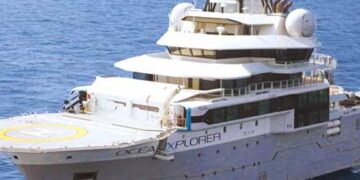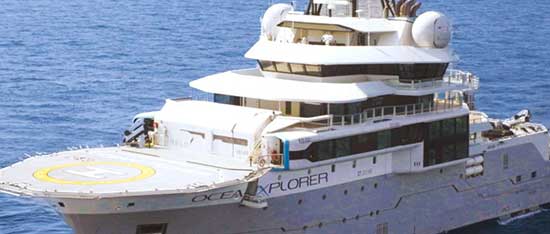Team Blitz India
Aresearch expedition has mapped the seafloor around the UAE, revealing active fault systems, as per a Gulf News report. The information will help researchers identify and understand certain types of cracks and moving pieces in the earth’s crust, which helps to predict where earthquakes might happen and how underground fluids move in the area.
The mapping was part of a wider 20-day joint exploration mission of the Arabian Gulf by the Environment Agency – Abu Dhabi (EAD), as part of an agreement with M42 Healthcare, Bayanat, and OceanX to explore the impact of climate change on UAE waters, which are among the world’s warmest.
Over the course of the expedition aboard the OceanXplorer – which EAD described as “the most advanced research vessel ever built” – the team conducted joint research into environmental DNA (eDNA), analysed underwater microbial communities, evaluated nutrient concentrations, studied populations of large marine species, and surveyed the geology and bathymetry of the seafloor around the UAE.
A total of 86 deep-water coral specimens were collected, and 1,257 sqm of high-resolution, multibeam bathymetry mapping was conducted. During the expedition, a total of 10 submersible trips were conducted, including the “first submersible excursion undertaken by two female Emirati scientists from EAD”. The research expedition included 19 dives using remotely operated vehicles (ROVs), collected 926 samples of marine water, biodiversity, and sediment, and supported 9 different studies from the EAD’s Abu Dhabi Environment Research Network in the UAE – a pioneering research network launched by the Agency to enhance environmental research in Abu Dhabi.
Scientists involved in this mission included four Emirati scientists engaged in ground-breaking research on deepsea biology, geology and oceanography around the Arabian Gulf and Gulf of Oman. In addition, onboard were scientists from five entities of ADERN. A total of 13 DNA samples were extracted from seven different whale and dolphin species. The genomes of the Indo-Pacific bottlenose dolphin, IndoPacific finless porpoise, and Indian Ocean humpback dolphin were also fully sequenced.
















